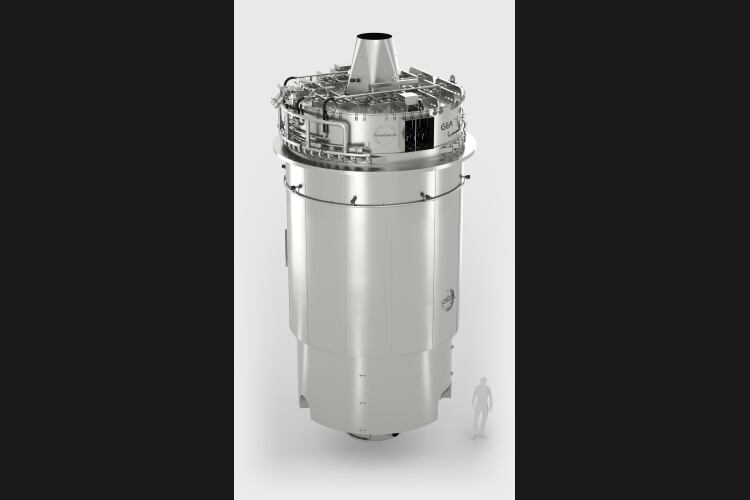The new, patent pending, SANICIP II maintains and controls the pressure drop through the filtration bags more effectively by promoting longer production times and reducing CIP intervals. Combined with other advances, such as easier maintenance and better space utilization than its predecessor, bag life is now up to 50% longer.
GEA said this means more reliable operation, financial savings and a better working environment for operators.
Following studies with customers, GEA identified areas where design modifications could be made in this new generation of SANICIP technology. Using computational fluid dynamics (CFD) techniques to optimize airflow within the filter, GEA was able to reduce the length of the filter bags from up to 7 meters to just 4.5 meters and, by reducing the diameter, and increasing the number of bags within the filter chamber, retained the total filtration surface area of the system.
This change results in increased practicality and efficiency while contributing several additional benefits, the company said.
One benefit is shorter filtration bags and cages.
Each filtration bag is supported by an internal cage structure. The 4.5-meter cages are much lighter in weight than their longer predecessors, making maintenance easier. The shorter cages can also be fabricated as a single piece, rather than joining two structures, allowing the cage to come more easily and more quickly into position. And its rigidity makes it more structurally sound.
GEA has also made the fixing system for each cage obsolete, eliminating the need for loose bolts, nuts and brackets, which were difficult and time consuming for engineers to handle during routine maintenance. The shorter filtration bags are exposed to less turbulence making them less prone to mechanical wear and thereby extending their operational life by up to 50%.
GEA has also looked closely at the design of its dedusting system, essentially comprising super-sonic nozzles and rapid diaphragm valves. The system ensures the powder that builds up on the bags is pulsed down into the bottom of the filter. Using CFD techniques combined with full-scale testing, has allowed GEA to make precise adjustments to the profile of the super-sonic nozzles and their position, and to the design of the diaphragm valve.
This, combined with the shorter bags and the novel inlet system, ensures powder on the bags is controlled and never exceeds the desired level. As a result, the need for frequent cleaning, which would otherwise seriously affect production schedules, is reduced and the pressure loss through the bags can be maintained indefinitely. Improved dedusting capability was already made available in more recent SANICIP models and, with these additional updates, is now fitted as standard on the SANICIP II.
GEA made another change by redesigning the inlet from the spray dryer, which is now vertical instead of horizontal. This facilitates a more even distribution of air within the filter, reduces the footprint required and allows for a more adaptive plant layout. This layout may, in some instances, allow for lower building heights, thereby lowering capital investment, which can be substantial, particularly in areas with high regulatory cost and requirements, such as in earthquake-prone zones.
Stig Møller Andersen, product manager for GEA in Copenhagen, said, “We listened carefully to our customers’ concerns and systematically addressed them in the new SANICIP II. The result is a bag filtration system that effectively supports the spray dryer while providing a wide range of operational benefits for the user.”
GEA said the optimization of the SANICIP II, compared with previous models, delivers a range of benefits for food and dairy powder processors. The most significant is the ability to control pressure loss across the filter bags thereby extending production times and reducing the need for CIP cycles.
The inlet ductwork allows the filter to be placed closer to the dryer, and the shorter filtration bags experience less turbulence so are less prone to mechanical wear. These modifications extend the operational life of the bag from 12 to 18 months or 12 CIP cycles – whichever comes first – providing a savings on maintenance costs and improved uptime. The reduced number of CIP cycles, and lower costs for spare parts leads to an optimized total cost of ownership (TCO).

